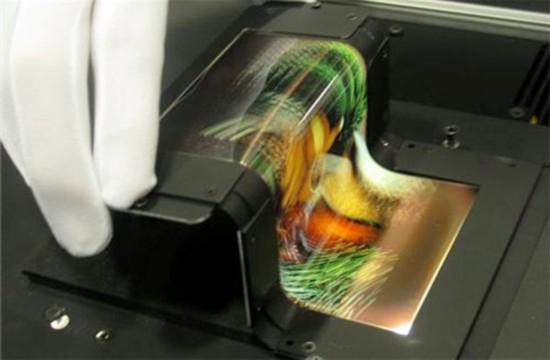To solve this problem, a research team at the University of Exeter in the United Kingdom developed a new kind of “sandwich†graphene in 2012: a new material called “graphexeter†adds a triple to two layers of graphene. The ferric chloride sandwich layer is superior to existing conductive materials in transparency, weight, and flexibility.
A recent communique issued by the University of Exeter stated that in the latest research, its research team has further validated the stability of this new material, and for the first time trialled a flexible display screen with this new material. The new flexible display not only has high brightness and low energy consumption, but also has a very uniform and stable brightness.
Saverio Roussou, a researcher at the University of Exeter who participated in the project, said that the new study confirms that this material is suitable for large-size flexible displays and may help to revolutionize electronic equipment production in the future. Applications in medical and other fields also have good prospects.
Recently, researchers at the University of Beerkin in Turkey have turned this idea into a reality. The researchers have sandwiched a common printing paper between two layers of graphene film (consisting of multiple layers of graphene), turning it into a Flexible electronic display. They also arranged graphene in a multi-pixel mode, folded the paper into three-dimensional shapes, and printed colorful patterns on it, showing another effect different from wafer technology.

Graphene flexible display is born on paper Optoelectronic era is coming soon
According to the Institute of Electrical and Electronics Engineers (IEEE) "Spectrum" website recently reported that in flexible displays, graphene itself has a variety of uses, such as to replace another scarce material, indium tin oxide (ITO, a control of the display pixels Transparent conductors) can also be used as electrodes on the display base plate.
Researchers published a paper in the "Photonics" magazine saying that it is still a great challenge to manufacture paper-based optoelectronic devices because the paper surface is rough and incompatible with optical materials. Instead, they use graphene as an electrically configured optical medium. By applying a bias voltage to the graphene on the paper, the interstitial layer between the graphenes is triggered, and the light absorption property is changed, changing from transparent to black or from black to black. Transparent. The author of the paper, Coskun Kokabash, said that this system can be used as a framework to turn plain paper into an optoelectronic display.
They used chemical vapor deposition to grow graphene on the metal surface. After removing the metal in the water, a thin layer of graphene film was left. Then, the paper was immersed in water to transfer the graphene film to the paper. In the experiment, the display was less than half a second from transparent to dark, and from dark to transparent about 4 seconds, which is more suitable for signal systems that do not require image conversion, but its refresh rate is still too high compared to the normal display. slow.
Cokabash said that the previously developed technologies based on the principles of electrophoretic particle motion, thermochromic dyes, and liquid electrowetting can also realize the effects of electronic paper. There is great potential in the field of consumer electronics, but these technologies are associated with traditional cellulose manufacturing. The paper is incompatible with each other. They are developing a display that displays information on a regular print.
The researchers stated that in the future, they plan to further develop electronic paper with full functionality, with pixels and integrated drive circuits, and hope that this technology can also be used in roller manufacturing processes.
Application Scope:
The floors that shall be anti-slip in such places as workshops,factories, parking lots,ramps,walkways,food factories,meat processing factories,kitchens in dinning halls and so on.
Product Features:
Coarse surface,anti-slip,no sand rising up and able to achieve good anti-skip result.
Excellent mildew,acid, alkali.salt erosion resistant and poison by-effect free.
Excellent endurance,strike resistance,seamless,dustproof,waterproof,and easy to clean.
Excellent adhesion,rich of color,offer standard colors or colors reordered by customers.
Epoxy Sanding Wear-Resistant Floor,Epoxy Sanding Anti-Slip Floor,Garage Floor Epoxy,Epoxy Sanding Floor
Jiangmen Kasole Building Materials Co., LTD. , https://www.kasole-paint.com